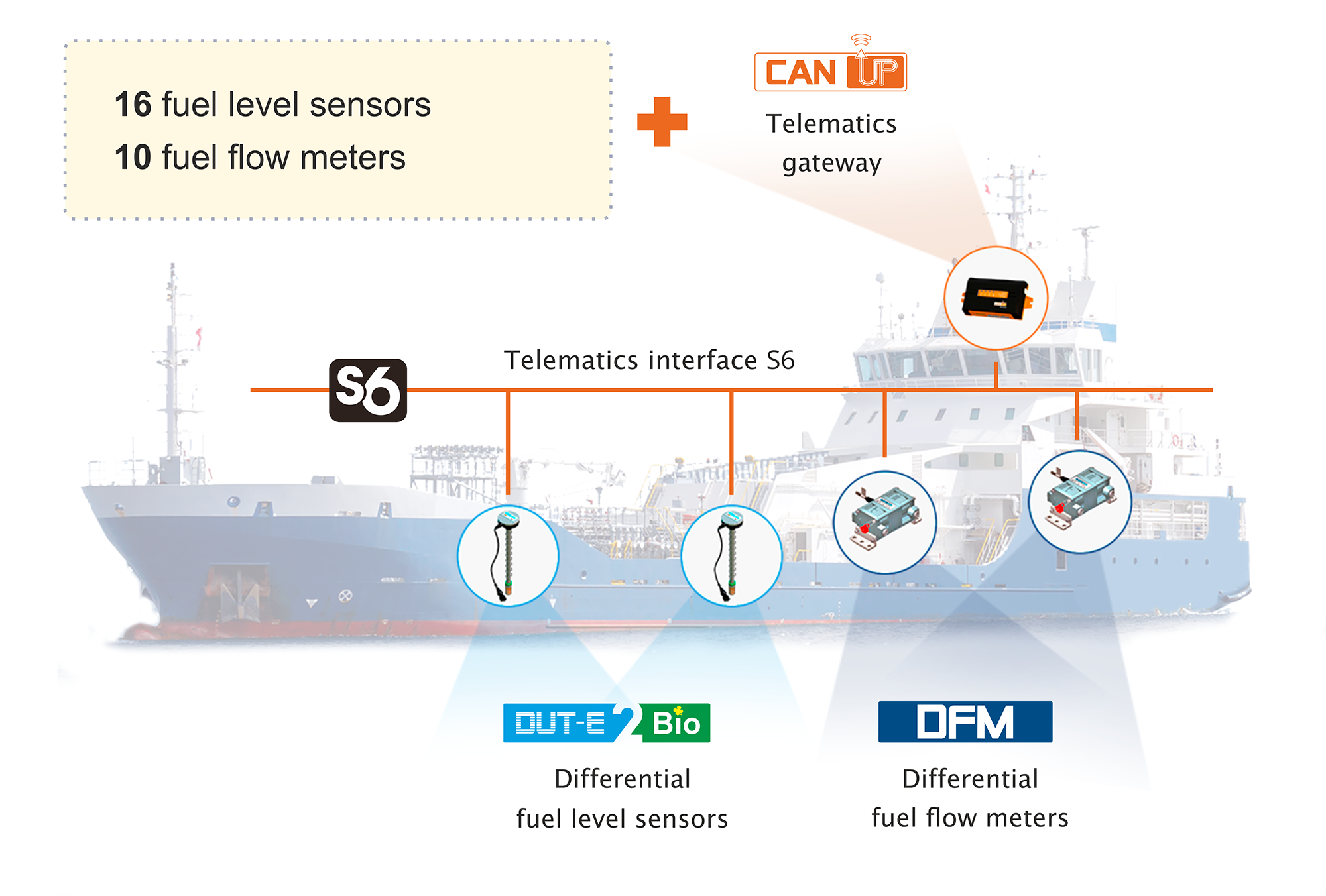Technoton has successfully tested the performance of S6 bus 320 meters in length, which includes 26 fuel sensors – 16 level sensors and 10 fuel flow meters and CANUp telematics gateway. The test has confirmed the capabilities of S6 Technology in creating complex monitoring systems with multiple control points – tanks/cisterns, engines, generators, boilers.
The need for testing was related to one of regular Technoton’s customers.
Few words on the project
Technoton has been using S6 Technology for a long time for complex objects, but the need for such a bus length and such a number of devices in one network arose for the first time, so it was decided to conduct laboratory tests and develop recommendations for our customer.
One of our regular customers, a distributor of world brands of marine electronics in Asia, received an order from a shipyard to implement a monitoring system for a self-propelled barge. After the pilot installation, it was planned to equip more than 160 watercrafts. The objectives of the implementation of telematics system are: control of actual fuel consumption, prevention of fuel theft, accounting the operating time and condition of engines, increasing the transparency of fuel costs accounting.

Main feature of machinery is large number of fuel consumers and fuel tanks up to two meters high, as well as filling the tanks with different fuel qualities. Therefore, the project uses DFM fuel flow meters, DUT-E 2Bio differential fuel level sensors and the CANUp telematics gateway to analyze data on board, store information in a weak GSM signal zone and transfer processed reports to a telematics server.
The tests affected not only S6 bus itself but also CANUp gateway – after all, this device will have to receive hundreds of parameters per second, analyze the received messages and generate reports.
How Technoton engineers team conducted the test

- At the first stage of testing, bus device was designed, the necessary elements of S6 cabling system were selected, taking into account the number and expected physical location of sensors, flow meters and gateway. The length of the main cable was 320 m, the length of the branches was 12m*5 and 7m*14.
- Further, Technoton engineers assembled “on the table” a system based on 16 DUT-E 2Bio differential fuel level sensors and 10 DFM differential fuel flow meters, and CANUp telematics gateway.
- The second step was to set up the system, and then test the bus operation at a speed of 100 kb/s, and then 125 kb/s using telematics gateways CAN UP 27 standard and CAN UP 27 Genset.
- The final stage of testing was data recording using MasterCAN. Device allowed our engineers to control the bus load and send data to the monitoring server from each block.
Conclusion on experiment with S6 bus
- Monitoring system, based on 26+1 devices with a total length of 320 meters was successfully built. During testing, the maximum possible length of S6 bus was determined – 500 meters. Above this length, the percentage of message losses increases noticeably.
- With a bus length of 320 meters, the optimal data transfer rate is 100 kb/s, the bus load is 98-99%. Monitoring system according to S6 Technology can include more units of on-board equipment of the telematics system (sensors, flow meters, gateways, converters) – up to 100 devices in total.
- When using more than 30 units of fuel sensors or other on-board devices in one S6 bus, it is recommended to use 2 units of CANUp telematics gateways to generate and transmit to the server a larger number of On-Board Reports.
- The number of status and fuel consumption parameters received from telematics devices using S6 Technology is much more (more than 10 parameters from each controlled unit) than a standard NMEA interface allows. The introduction of S6 at the shipbuilding stage at the shipyard, in fact, creates a parallel NMEA (if it is provided by the project) more informative network.
Advantages of S6 Technology
- Reliable cabling system with common power supply line for all connected units.
- Fast and easy connection of all telematics equipment using bus principle.
- Only one CAN interface is needed for gathering over 200 operating parameters.
- Simple integration of analog sensors and devices with different interfaces into telematics system.
- Easy configuration of telematics server – different interfaces and types of messages are unified into a single CAN J1939/S6 protocol format.
- Scalability of telematics system: easy connection of additional onboard equipment.
- High resistance to interference and incorrect electrical connection of equipment.

